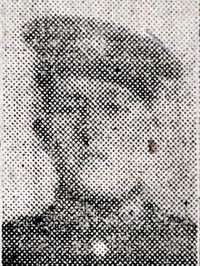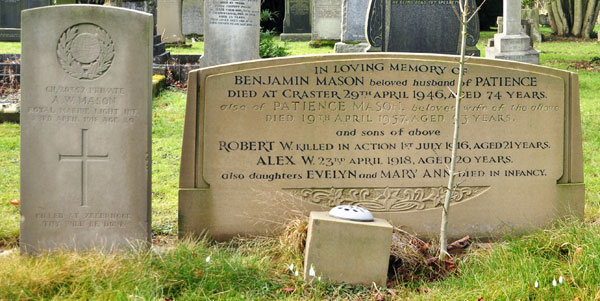 |
CRASTER WAR MEMORIALS World War Two About the Project |
Alexander Woodcock Mason
Private Alexander Woodcock Mason of the Royal Marine Light Infantry, Service No. CH/20357, died on the Zeebrugge raid on April 23rd 1918, aged 20. Alexander is buried at Spitalford with a Commonwealth War Graves Commission headstone next to the family grave. Alexander was the son of Benjamin Mason, born in Craster North and his wife Patience, born in Rock. The 1911 census shows that Benjamin and Patience had had three children, but only one had survived, their son Alexander. Daughters Evelyn and Mary Ann had died in infancy. They had adopted a boy, Robert who was four years older than Alexander, who was also killed during the war and is remembered on the Craster memorials. In 1911 Alexander was 13 years old and still at school. Children generally stayed at Dunstan School until they reached 14. It is possible that he went on to follow his father into quarrying as his step-brother Robert had done. We have discovered no evidence that Alexander was married or had a family at the time of his death. Given his age, it is unlikely. The family inserted an item in the Roll of Honour column of the Alnwick and County Gazette newspaper on May 4th 1918:
He may have returned from the raid wounded, but subsequently died of his wounds. However, the majority of the bodies of those killed at Zeebrugge were repatriated and claimed for burial by their families and this is also possible.
The Royal Marine Light Infantry at Zeebrugge, April 1918The objective of the Zeebruge raid was to reduce u-boat activity in the North Sea by sealing the entrance to the Bruges canal, thus trapping the u-boats in their base upstream The Cruiser Vindictive was to land marines on the mole to destroy German guns and three ships were to be scuttled in the entrance to the canal. Of the landing on the mole the Admiralty report said :- “The mere landing on the Mole was a perilous business; it involved a passage across the crashing, splintering gangways, a drop over the parapet into the field of fire of the German machine guns which swept its length, and a further drop of some sixteen feet to the surface of the Mole itself.” Heroic actions led to the award of 7 VC's, but the raid did not achieve its strategic aim of blocking the submarine base and reducing submarine activity. Within 2/3 days the u-boats had a clear passage to sea. Jack Browell says that his father, who later served as senior coastguard in Craster, was a gunner on board the Vindictive. Commonwealth War Graves Commission - Alexander Woodcock Mason |
Home Programme Membership Archive War Memorials History Walk Miscellanea Links Contact Us


